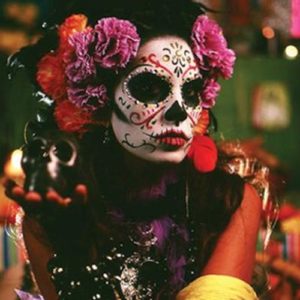Dia de los Muertos is celebrated on Nov. 1 and 2 in Mexico, Latin America, and even places in the United States with large Hispanic populations. With about 35 percent of Austin’s population being of Latino descent, there are plenty of Dia de los Muertos celebrations coming up.
This holiday honors loved ones who have passed with the food, drink and activities that the dead loved while they were alive. The belief of Dia de los Muertos is that death is a part of the human experience, and that the deceased are able to celebrate on Earth with their families on this day.
Austin culinary arts students can also try their hand at cooking some of the traditional Dia de los Muertos dishes this year:
Sugar skulls: Brightly colored, intricately designed sugar skull candies are the most recognized symbol of Dia de los Muertos. They’re made to adorn the altars built to honor passed loved ones or their graves. They’re not usually made to eat. They only contain granulated sugar, powdered sugar, meringue powder, and whatever you use to decorate them.
Pan de muerto: This bread is made for eating. It’s very similar to Mexican sweet bread, but anise seeds or orange flower water may be added. Pan de muerto is traditionally molded to resemble bones. It’s usually eaten a the gravesite or altar of the deceased alongside one of their favorite dishes.
Atole: Similar to hot chocolate, just thicker, atole is made by cooking ground field corn in water. Milk may be added for a creamier taste. Flavored with dark chocolate and cinnamon, it’s a little bit sweet and a little bit spicy, but more sugar or water can be added to suit your tastes.
Mole negro: Mole negro should be made by someone looking for a challenge. This sauce can be served on meat or vegetables, tamales or enchiladas. It’s very flavorful, made with tomatoes, tomatillos and a combination of spices and small ingredients.
Sopa azteca: Sopa azteca is a spicy, flavorful tortilla soup that is a staple in every Mexican kitchen. A fantastic side dish or something to serve on its own, sopa azteca is highly customizable and you can make it exactly how you like your soups.
If you don’t want to cook for Dia de los Muertos, check out some of the upcoming events in the Austin area, like the Emma S. Barrientos-Mexican American Cultural Center celebration on Oct. 24, the Mexic-Arte Museum’s Viva la Vida Festival on Oct. 31, or the Williamson County Hispanic Heritage Committee’s Dia de los Muertos procession and festival on Nov. 7.


